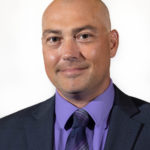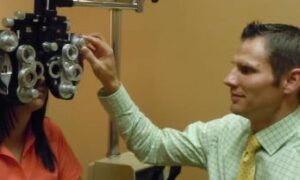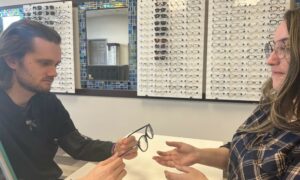Sponsored Content

By Jacob R. Lang, OD, FAAO
Nearly 16 million Americans now have dry eye, according to the National Eye Institute. Fortunately, treatments to address this condition have come a long way. Here are tips to getting started treating dry eye in your practice.
No Need for Advanced Instrumentation to Start With
One fortunate component about ocular surface disease (OSD) is that it is external. When examining the ocular surface, the tear film quantity, meibomian glands, and other critical structures, are easily accessed for examination at the slit lamp. While there are new instruments that can ease the acquisition time, don’t place too much focus on new technology. A thorough slit lamp exam is still king of the mountain to touch, feel and visualize the disease state.
The examination should include an evaluation of the patient’s eyes bolstered by symptom questionnaires such as the SPEED II (Standardized Patient Evaluation of Eye Dryness), DEQ-5 (Dry Eye Questionnaire) or OSDI (Ocular Surface Disease Index). When reviewing the ocular surface, a complete evaluation of tear fluid height, lid disease, lid structure, and functionality, including blink rates and efficiency, are important.
Create a Culture that Makes Dry Eye a Priority
Your staff interacts with your patients as much, if not more so, than the doctors treating them, so it is equally important for them to be educated about OSD. They can then share information about potential treatments, as well as their costs, with patients upfront. Not only will this ensure that your patients get the care they need, but it will also keep them in your practice rather than seeking care elsewhere.
Every organization, no matter the size, structure, or objective, has a culture. As a leader,you can decide to create the culture you wish to have, or not. If you do not form, mold, and create this ideology, someone or something else will. By taking an active role in educating your team about OSD, you can help build a culture of recognition, treatment, and acceptance, within your organization. This can be as simple as keeping your staff up to date with lunchtime learning sessions. Don’t forget to talk to them about the importance to your business strategy. Even a quick conversation in the hallway about how OSD was the root of “Mrs. Smith’s” complaints, or how she’s doing better with your treatment plan, can enhance the staff’s enrichment journey.
Part of making dry eye a priority among staff is to train them on how to educate patients about ways treatment, which is often out-of-pocket, can be made more accessible. One way to create greater accessibility to treatments is via the CareCredit credit card.
“Mrs. Smith, I understand the concerns you have expressed regarding the cost of the treatments the doctor has prescribed. In our office, we offer the option to pay with the CareCredit credit card. You can then spread payments out, rather than having to pay all at one time. I can help you the through the simple application process, and then show you your options for payment.”
Create a Dry Eye Services Growth Plan
When you launch your dry eye services, you can begin with little more than a slit lamp, but you should educate yourself about the newest technologies to diagnose and treat the condition, with the idea that you will add some of these innovations to your practice as you grow your dry eye patient base.
Newer technologies that measure inflammation, such as InflammaDry (Quidel), and ascertain tear film osmolarity (TearLab), can aid in treatment recommendations. Additionally, there are several tools to image the tear film’s stability, volume and other attributes, including meibomian gland imaging. Although not mandatory for getting started, the information and understanding these technologies provide can speed up the provider’s learning curve when diagnosing and classifying the type of dry eye disease. They also allow for a more detailed and quantitative assessment of treatment success (or failure).
The right provider knowledge combined with the addition of new technologies when the time is right–and the ability for patients to more easily access treatment via options like the CareCredit credit card–are a recipe for success. Your patients will thank you for your ability to effectively identify, and put within reach, these essential treatments.
Learn More
Click HERE, or the image below, to watch the video, “Dry Eye Tips from the Front Lines,” that will show you how to apply the lessons used in this article to your practice.
 Jacob Lang, OD, FAAO, practices with Associated Eye Care in Stillwater, Minn.
Jacob Lang, OD, FAAO, practices with Associated Eye Care in Stillwater, Minn.



























